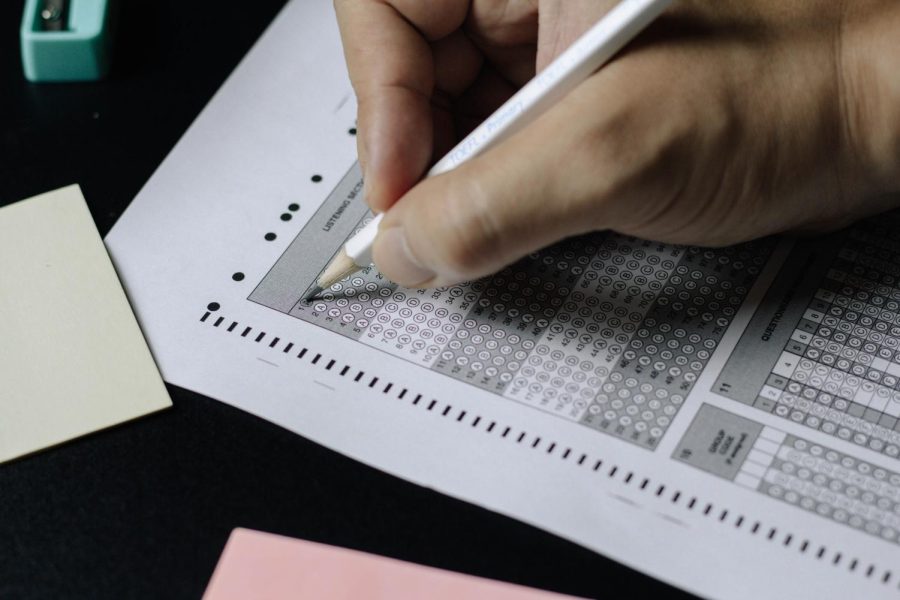Bubble in A: Why to abolish the SAT
Students complete the SAT in four sections that include reading, writing, language and math. The majority of questions are answered in multiple choice form.
December 1, 2021
The 154 question test is expected for college admissions. Do well, get into the college that is desired. But do poorly, and the opposite might happen. This is the SAT.
Some will say that the SAT is a fair test because it puts all students on a level playing field. While most schools offer the SAT for free for their students at this point, there are still other benefits to students who have parents in a higher tax bracket
According to the New York Times, the SAT is highly coachable and it is very common for wealthier students to pay for the benefit of extra help before exam day. The cost of tutoring could be as high as $1,000 per hour. This is not something many students can afford, considering that numerous sessions are often needed, better tutors can warrant higher rates and the costs can quickly add up.
SAT classes are not much more affordable. The Princeton Review, which has been offering courses for decades and improves student scores through vocabulary lists, reading prompt strategies, and math tips/tricks, costs $1,500 per course. While online or in-person courses can help increase a student’s scores dramatically, this is not accessible to most hopeful college students.
An even playing field for students would mean all students get the same test preparations and test in the same environment. This is nearly impossible because there are a variety of financial situations, learning abilities and testing locations, which clearly shows that there is no equity when it comes to the SAT.
The SAT was created in 1926 by Carl Campbell Brigham, a known eugenicist, meaning he hand-selected people to mate with specific desirable hereditary traits. While the SAT test has had several updates throughout the years, a test originally created in 1926 should not be the basis for students in 2021.
It has come down to the College Board being too traditional to make a significant change, and students are suffering because of it. The stress that the SAT causes students is completely understandable because it can be a big determining factor for college acceptances.
The Classic Learning Test (CLT) is a possible alternative to the SAT. Founded in 2015, it has been called a “competitor” to the SAT and ACT by the Wall Street Journal. While it is currently only used by some smaller schools and other private institutions, it is a shorter test in comparison to the SAT, with only three required sections that take two hours.
According to a December 2019 article in the Los Angeles Times, “Research has shown that grades are the best single predictor of college performance and aren’t as heavily influenced as the standardized exams by income, parent education level and race.” This supports that a test such as the SAT could be eliminated completely in favor of weighing a student’s entrance on GPA.
There should not be one test that plays this big of a role in one’s future. In addition, research has proven that long standardized tests are far too draining on students and are not accurate evaluations of student performance. There are an abundance of reasons why the SAT should be abolished. In reality, though, the chance that colleges who review the scores or the College Board will do anything at all is quite slim.



